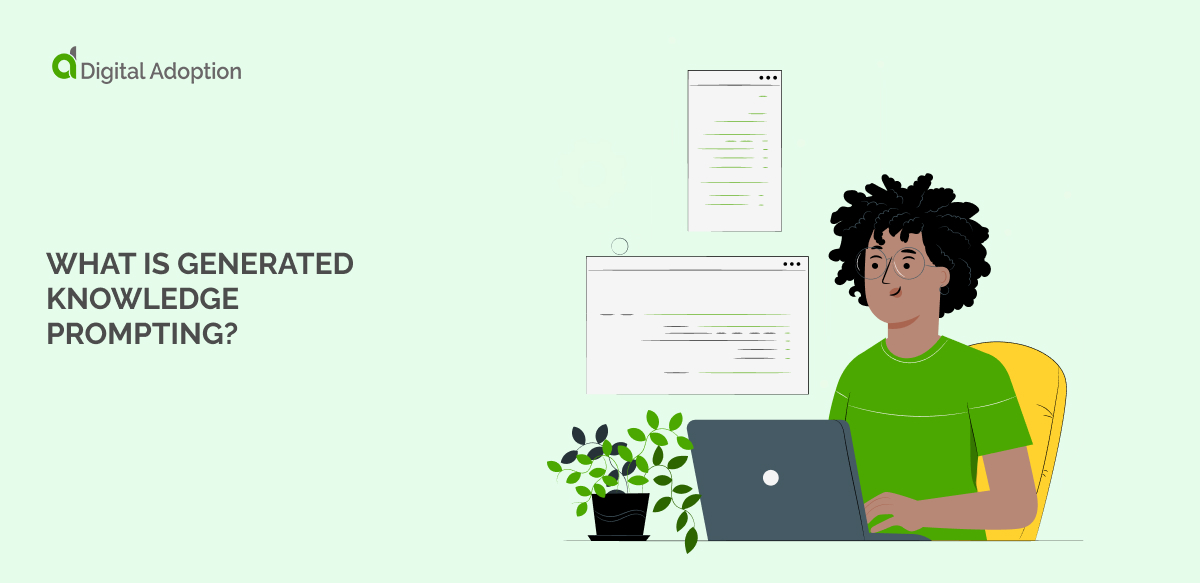In this guide, we’ll learn how to maintain customer continuity and business continuity during disruptive times.
Unsurprisingly, the current crisis has pushed continuity to the top of many business leaders’ agendas.
During today’s economic volatility, having a plan may mean the difference between success and failure.
Let’s start by learning what continuity means and why this concept is so important.
- Customer Continuity and Business Continuity: Key Definitions
- 2 Trends That Are Reshaping the Future of Customer Continuity
- How to Maintain Customer Continuity: 10 Tips and Best Practices
- Customer Continuity Beyond 2020: Frequently Asked Questions (FAQ)
- How to Prepare for the Digital Future of Customer Continuity: 3 Keys to Success
- Final Thoughts
Customer Continuity and Business Continuity: Key Definitions
In a business context, continuity often refers to an organization’s ability to maintain continuous operations or service delivery.
Here are three important concepts related to continuity in business:
- Customer continuity. Customer continuity often refers to an organization’s ability to acquire and retain customers. It can also be a shorthand reference to the customer experience – continuous customer experiences are those that remain seamless and consistent across multiple channels and touchpoints. For the purposes of this article, however, we will focus on the link between customer continuity and business continuity, both of which are very relevant in today’s business environment.
- Business continuity. Business continuity plans are designed to help an organization maintain continuous operations during disruptive events, such as natural disasters or workplace accidents. Primarily, business continuity actions revolve around the protection and restoration of critical business functions.
- Organizational resilience. While business continuity focuses on response plans, organizational resilience planning aims to proactively mitigate risks by making the business more robust and resistant to disruption. Disciplines such as IT, for instance, can help boost organizational resilience by adopting modern digital tools, improving the organization’s use of data, and improving employees’ digital skills.
All of these concepts are closely intertwined and interdependent, so it is useful to examine all of them together when studying customer continuity.
2 Trends That Are Reshaping the Future of Customer Continuity
There are several forces that have been fueling change in the way companies acquire and retain customers in recent years.
Two of the biggest include:
Digital Technology
The digital revolution has had a massive impact on the way we live and conduct business.
Technology-driven innovation opens the door to new and innovative forms of value, which then leads to changes in customer expectations and behavior.
Smartphones and mobile technology, for instance, increased demand for mobile apps, mobile communications, mobile customer experiences, and so forth. Those changes, in turn, gave rise to trends such as mobile-first marketing strategies.
When designing customer continuity plans for the future, it is important to understand this and plan accordingly.
In the coming months and years, for instance, we will see the emergence of new technologies such as:
- Augmented reality. Augmented reality refers to the use of digital software to project, or “mix,” digital content with the real world. Google Glass, for instance, represented an early project by Google that allowed users to overlay digital content on top of the physical world. This industry has been quietly receiving large investments over the years, and when it becomes mainstream, it will certainly impact the way companies interact with their customers.
- Virtual reality. While augmented reality interweaves digital content with the external world, virtual reality fully immerses users into a digital environment. Virtual technology has shown a great deal of promise in gaming, but it will also affect countless other industries. Online shopping, for instance, could be completely revolutionized with the adoption of virtual technology.
- Artificial intelligence. Today, many large enterprises are using artificial intelligence to improve customer service. Virtual agents, for instance, use text or speech recognition to automate and streamline customer service. These tools can be implemented over the telephone, on a website, and inside apps. As artificial intelligence continues to grow, so too will the adoption of artificial intelligence in customer care.
All of these technology trends are important and will exert an influence on customer behavior, but technology is not the only to pay attention to.
COVID-19
The COVID-19 pandemic has swept across the world and resulted in an unprecedented crisis, the magnitude and scope of which we are still trying to understand.
As the crisis continues to unfold, it has seriously damaged countless businesses and industries, though a select few have experienced growth.
Here are a few points to consider when designing continuity plans for a post-COVID world:
- Discretionary spending will remain low for years to come. In 2020, the pandemic caused a global financial crisis that nearly ground the financial system to a halt. Unemployment, government restrictions, and public health concerns all depressed discretionary spending and reduced many companies’ ability to maintain customer continuity. Since it could take years for the economy to fully recover, it is important to adjust customer continuity strategies accordingly.
- Customers will be more interested in connecting through digital channels. Digital media is more convenient and cost-effective, which have been driving factors for the widespread adoption of online shopping. COVID-19 will also play a role, however, compelling many people to stay indoors and connect with brands digitally. That trend may well continue after the pandemic, since health conscientiousness may increase significantly.
- Certain areas, such as streaming services, are being accelerated by the pandemic. Many industries have suffered significantly during the pandemic, but some are seeing growth. As we discuss later, it is important to evaluate one’s own industry and adapt quickly to changing market conditions. Agility and flexibility will become paramount, rewarding those who can adapt to customers’ changing expectations.
The pandemic has affected every industry differently, which is why it is important to analyze one’s own market conditions in detail.
Most importantly, however, it must be understood that the pandemic will permanently reshape the economy, business, and our daily lives.
Customer continuity efforts should therefore be geared towards a new normal, or, as McKinsey calls it, “the next normal.”
How to Maintain Customer Continuity: 10 Tips and Best Practices
Acquiring and retaining customers is difficult during a healthy economy – and it is even more so during crises and financial recessions.
In order to stay successful in the next normal, many organizations will be forced to develop entirely new business strategies.
Here are ten tips that can help business professionals rethink and revitalize their customer relations:
1. Pivot now for the next normal
Business products, services, strategies, and processes should all be pivoted to align with the post-COVID reality.
As mentioned above, that paradigm will likely usher in new trends in customer demand and behavior, many of which will become permanent features of the business landscape.
In short, business leaders should not expect to see a return to the pre-2020 economy.
They should instead be prepared for an entirely new business landscape and begin altering their strategies now.
A good way to start is by adopting some of those covered below.
2. Become data-driven
Data-driven business processes are more efficient, more effective, and more productive than those that don’t use data.
Data, after all, provides objective insights into performance, which can then be used to make better decisions.
Here are a few ways to build a data-driven workplace:
- Standardize data-driven business processes
- Proactively cultivate a data culture
- Democratize data and encourage data sharing between departments
- Adopt modern data and analytics tools
Naturally, changes such as these may require significant time and energy, which is why some businesses have hesitated to introduce them into the workplace.
However, as with many other digital transformation efforts, the risk of not changing may actually be greater than the risk of initiating change. Today’s economy, after all, is becoming more digital by the day – companies that can’t keep up risk losing market share to those that can.
3. Deliver an omnichannel customer experience
The customer experience has been a major focus for many companies in recent years.
There are several reasons why.
Good customer experiences, for instance, positively affect key metrics, such as retention, loyalty, and lifetime value.
Bad ones, however, have the opposite effect and even a single bad experience can drive customers away.
In today’s digitally-powered world, it is important to provide the best experience possible and meet customers where they are.
Omnichannel experiences are designed to deliver messaging, content, and communication across multiple digital channels. This allows brands to connect with people on the platforms that they are most comfortable with.
The result: happier customers who will stay loyal over the long haul.
4. Build agile business processes
Agile business processes offer yet another way to improve customer experiences, products, and services.
These processes are built around several key principles, such as:
- User-centered design
- Collaboration and communication
- Responsiveness over adherence to static plans
Many have contrasted the agile approach with a waterfall approach to business, which often builds products and solutions over long time spans, with limited customer input. While this approach worked well before the digital era, it is less useful today.
Since the economy moves so quickly, companies can no longer afford to spend months or years creating products without testing them.
Digitally-delivered services, after all, can be rolled out in a far shorter time span, especially if those services are built with agile processes.
5. Prioritize resilience rather than efficiency
Organizational resilience, as mentioned above, focuses on making an organization more resistant to disruptive change.
There are different frameworks that model organizational resilience, but the underlying idea is the same – take a multi-pronged approach to risk mitigation.
One model of organizational resilience, for instance, identifies 12 separate management disciplines that should be implemented.
These include:
- Financial health and viability
- Risk management
- Information security
- Supply chain resilience
Naturally, a comprehensive approach such as this one goes above and beyond customer continuity.
However, the same fundamental truth still applies: resilient systems will fare better in the face of disruption.
Efficient systems, however, are less likely to hold up in the event of a major disruption. The pandemic demonstrated this clearly, as global supply chains became interrupted.
Cutting costs to too many areas may improve efficiency, but if that efficiency reduces resilience, then the customer experience could suffer. And, as we saw above, customer experiences have a direct effect on profit margins.
6. Innovate
Innovation drives success in the modern economy.
As we have seen in the past few decades, the world’s most innovative companies have become world leaders. Technology companies such as Google and Apple, for instance, quickly rose to become among the most profitable in the world.
The digital revolution has yet to end, though, and in the coming months and years, innovation may become even more important.
Along with the other strategies covered in this article, it is important to recognize that innovation requires a substantial investment.
Yet that commitment can also bring about large rewards.
To test whether an organization is truly committed to innovation, McKinsey advises addressing whether:
- Innovation-led growth is viewed as critical
- The company has a balanced portfolio of innovation initiatives
- There are sufficient insights to create winning value propositions
- New business models are being built that will drive profit
- Innovations are developed and launched quickly
- The innovations are appropriately scaled and positioned
- External networks are capitalized sufficiently
- The organization’s people are engaged and organized properly
Today, as we navigate the COVID-19 pandemic and its resultant financial crisis, innovation is even more important. As the shape of the economy continues to evolve, companies will need to innovate in order to design and produce customer-centered solutions that are relevant and profitable.
7. Dedicate resources to digital training
In the workplace, digital skills are essential for a company to use modern IT systems and tools.
A company that wants to see real results from its workforce will focus not only on implementing software, but maximizing that software’s ROI through training.
Since today’s workplaces are built upon digital tools, it should go without saying that digital skills are a must for the modern workforce. Without the proper skills, they will not be able to create winning customer experiences.
Tools such as digital adoption platforms offer an excellent way to keep employees skilled and trained.
These platforms offer:
- In-app training and walkthroughs. Digital adoption platforms operate as a UX and training layer on top of the target software, teaching users how to use that tool directly inside the application. When using a digital adoption platform to learn Salesforce, for instance, users will be walked step-by-step through key tasks and workflows, without the need for human intervention.
- Contextualized, AI-powered guidance. Virtual chatbots can help users quickly find the answers to questions. This reduces the need for technical support calls and improves the user experience at the same time. When used in the workplace, this means that employees will stay more engaged and productive. But it also means that digital adoption platforms can be used to streamline customer care and improve customer continuity.
- Software analytics that offer insight into users’ training needs. Tracking how people use a software platform can help managers understand common stumbling blocks and difficulties. That information, in turn, can be used to design or tweak existing walkthroughs and workflows.
With the right digital training solution, companies will be able to vastly reduce employees’ learning time, boost output, increase engagement, and more.
8. Manage change
Organizational change will often be required to implement many of the strategies covered here.
Yet change is rarely easy and success is never guaranteed.
To maximize the chances of success, it is important to take a structured approach to change management.
Change management, the management discipline dedicated to coordinating organizational change projects, focuses heavily on managing change at the level of the employee. Employee support, after all, directly affects the outcomes of organizational change programs.
When managing a change initiative, organizers will often focus on:
- Developing a communication strategy aimed at reducing resistance from employees. Employee resistance is a common reaction to poorly managed organizational change efforts. Much of that resistance can be mitigated simply through effective communication. This is why change management frameworks typically emphasize the need for up-front communication.
- Providing employees with the knowledge, tools, and skills they need to drive change. If employees lack the proper skills, they will be unable to use new software, implement new processes, and so forth. Training, as we discuss later, is therefore essential to successful organizational change.
- Coordinating teams. Large-scale change efforts often require multiple cross-departmental teams. Executives, managers, employees, and outside specialists, for instance, will often need to work together in order to bring about a change program. Change managers are typically the ones tasked with organizing and managing those teams.
- Monitoring data and adjusting efforts as needed. Change projects, large or small, must be continuously managed in order to avoid errors, inefficiencies, and failures. When implementing a change, change managers can improve their outcomes through data-driven decision-making and agile thinking.
With an approach such as this, organizations will have a much better chance of staying agile and implementing new business initiatives.
9. Adopt user-centered design practices
User-centered design builds products and processes around user feedback, as alluded to earlier.
When adopting a user-centered design approach, user feedback and data will become a key driver of design decisions.
A high-level overview of this process consists of four phases:
- Develop a plan
- Analyze the existing product and users
- Design the product
- Test and refine
Each stage of the design process will focus on the user, usability, utility, and other factors that affect the product’s performance and the user experience.
This type of approach shares many characteristics with the concepts covered above, such as data-driven and agile processes.
Rather than relying on personal design preferences or emotions, for instance, designers will use customer data to verify their hypotheses and make decisions.
Solutions that are built around users’ needs in this way will be more likely to improve key customer metrics, such as retention and loyalty – characteristics that directly affect customer continuity.
10. Go all in
Organizational change will often be required to successfully adapt customer continuity efforts to the new normal, as mentioned.
Not all change is created equal, however. Smaller changes deliver smaller returns and big moves are often needed to see large gains.
Those bigger organizational changes often carry a greater perceived risk, which is why many companies choose to change incrementally.
McKinsey has advised against this approach, instead suggesting that companies go “all in.”
In their research, they found that many organizational transformations focused only on productivity or portfolio-related improvements.
By investing in both of these transformation agendas – performance improvements and capital spending improvements – organizations will generate the biggest long-term returns.
Customer Continuity Beyond 2020: Frequently Asked Questions (FAQ)
Here are some of the most pressing concerns related to customer acquisition, retention, and continuity:
What are the biggest barriers to maintaining customer continuity?
In 2020, the COVID-19 pandemic became the largest obstacle to customer continuity, at least for a great many organizations.
A number of factors impeded normal business operations, such as:
- Public health mandates and government restrictions
- Decreased customer buying power and spending
- Changed customer preferences
Many of these variables differ from industry to industry, of course, but the overall impact has created a new business landscape.
Adapting to that new business reality may require drastic change, as mentioned earlier. But companies that can change successfully will fare much better as the world moves into the next normal.
Is the future of customer service fully automated?
AI, voice recognition, and automated technologies continue to evolve, leading some to speculate that the future of customer care will be far more automated.
Today, some of these technologies are already being deployed by world-leading enterprises.
Chatbots, for instance, are often used on websites to streamline customer service and technical support.
As mentioned above, several trends will continue to fuel trends such as this one:
- Digital technology will make it easier to automate certain types of customer service functions
- Online shopping and communication will become more common as more customers use online tools
- Cost, convenience, and improved experiences will convince customers and businesses alike to continue adopting these solutions
Automated customer care will undoubtedly become a major piece of the customer service function in the future.
While not all human customer service agents will be replaced with machines, they will be crucial for maintaining customer continuity in the years ahead.
Will offline shopping return after COVID-19?
For brick-and-mortar companies around the world, COVID-19 has been very damaging.
Retail, food service, and many other industries suffered significant setbacks, and a number have found it impossible to continue operating.
As of this writing, it is difficult to know the full impact on the offline customer experience.
However, companies that were swift to adapt to the new reality actually experienced growth.
Domino’s Pizza, for instance, experienced a surge in demand for delivery, then began recruiting an additional 20,000 drivers in the fall. A number of other restaurant companies and food service companies also experienced growth, despite lockdowns.
These signals suggest that offline customer service is far from dead, which in turn indicates that offline customer experiences will rebound.
However, the exact shape of the offline customer experience environment remains to be seen.
Rather than planning for an unpredictable future, companies should adopt many of the strategies covered above:
- Become agile in order to improve responsiveness and reaction time
- Build systems and processes that are resilient to disruptive change
- Use data and user-centered principles to stay focused on immediate customer behavior
- Innovate and move quickly to adapt to marketplace volatility
Approaches such as these will be far more valuable than attempting to accurately forecast post-COVID economic conditions. Companies who can integrate principles such as these into the workplace will be much more likely to emerge successfully into the post-viral age.
How to Prepare for the Digital Future of Customer Continuity: 3 Keys to Success
Above, we discussed 10 strategies for adapting successfully to the changing business landscape, such as remaining agile and building innovation into the workplace.
However, it is important to emphasize that tomorrow’s business world will be far more digital – and customer continuity will depend heavily on the successful navigation of that digitally-powered relationship.
In order to implement many of the strategies covered above, such as an omnichannel customer experience, business leaders may need to completely rethink the way they use technology.
Here are a few key concepts that can help companies clear the tech hurdle:
Digital Maturity
Digital maturity is a scale referring to an organization’s overall digital capabilities.
That maturity level depends on a number of factors, including:
- Which technology a company uses. IT modernization is a must for any company that wants to stay competitive in today’s economy. If employees use outdated tools, then the entire business will be affected, from internal business processes to the customer experience.
- How proficient and productive the employees are. Employees’ productivity with those tools depends directly on their digital skills. This is why digital training, as mentioned earlier, is so important in the modern workplace.
- The mindsets and attitudes workers have towards technology. Mindsets also affect how employees use tools and how productive they are with those tools. A digital-friendly culture will improve overall digital literacy, which will then, in turn, boost engagement and performance.
- How quickly companies can adopt new technology. The digital economy is dynamic and fast-paced, which means that companies must continually adopt new tools in order to stay modern. It is important to understand and account for this fact, since successful digital adoption affects areas such as organizational agility and digital maturity.
Digitally maturing cultures, according to Deloitte, are those that support change and attract talent. Their focus here is telling – it indicates that digital maturity is less about tools and more about how those tools are implemented.

In order to connect with customers in the digital world, therefore, the first step must be transforming the way technology is viewed and used in the company.
Digital Transformation
Digital transformation refers to the use of technology to transform an organization and the way it delivers value. It is also the path to digital maturity.
True transformations, it must be noted, are deep and they will fundamentally change the way an organization operates.
In today’s economy, digital transformations are also closely linked with holistic organizational transformation programs.
This is not to say that every company must become a technology company, but it does mean that technology should become fully integrated into the business at every level.
Digital transformation initiatives should be built around a series of activities, including:
- The digital adoption of new tools
- Cultivation of a pro-learning, pro-digital culture
- Innovative use of technology to improve the customer experience
- Leveraging technology to deliver new forms of customer value
- Proactively and continuously adapting to technological sea changes
Becoming digitally mature, in short, is the end goal of digital transformation.
Yet technology continually evolves, which means that companies must also continually adapt and adopt new tools.
Digital Adoption
Digital adoption means the implementation and utilization of tools to their fullest extent.
When implementing new tools in the workplace, many companies focus only on software deployment or implementation. Unfortunately, that approach leads to low productivity levels, a digital skills gap in the workforce, and other problems that lower software ROI.
To overcome these issues, it is important to understand that true digital adoption relies on the full utilization of digital tools.
A digital adoption strategy, therefore, encompasses several key areas:
- Software implementation
- Software onboarding
- User training
- Technical and user support
- Maximizing user proficiency and productivity
- Improving the user experience
Dedicating resources to employee training and digital adoption can fuel the success of digital transformation initiatives and ensure that companies can continue delivering great digital experiences to their customers.
Final Thoughts
Today’s economy presents many challenges for customer acquisition, retention, and continuity.
Difficult economic conditions, accelerated digital change, and a public health crisis have all made it more difficult to maintain customer continuity. These conditions may remain difficult for years to come, which will compel many organizations to make major changes to their customer experience strategies.
However, in that change lies opportunity.
Organizations who can successfully adapt to customers’ changing expectations will stand a much better chance of emerging successfully in the next normal.













